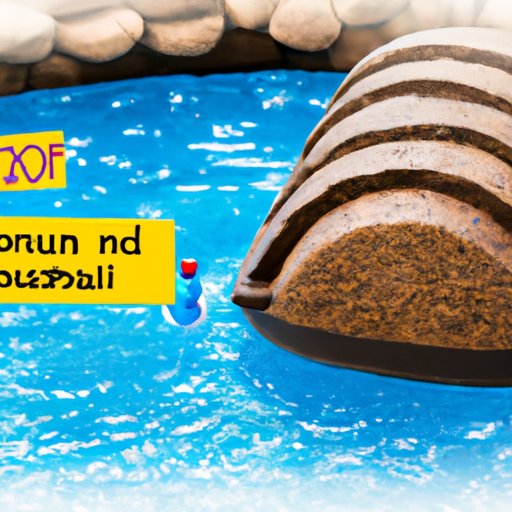Introduction
A hot tub can be a great addition to any home. Whether you’re looking to relax after a long day or entertain friends and family, a hot tub can provide hours of fun and relaxation. But before you jump in, you need to figure out how to finance it. In this article, we’ll explore the different financing options available so you can make an informed decision.
Home Equity Loan
A home equity loan is a type of loan that uses your home as collateral. It allows you to borrow against the equity in your home, meaning you can take out a loan with a lower interest rate than other types of loans. Home equity loans are typically used for large purchases such as home renovations or major repairs. However, they can also be used to finance a hot tub.
Pros: A home equity loan typically has a lower interest rate than other types of loans. This means you can save money on interest payments over the life of the loan. Additionally, the interest on a home equity loan may be tax deductible, so you can potentially save even more.
Cons: The biggest downside to a home equity loan is that you’re putting your home up as collateral. If you fail to make payments, you could lose your home. Additionally, if you have poor credit, you may not qualify for a home equity loan.
Personal Loan
A personal loan is a type of loan that is not secured by collateral. It’s typically unsecured, meaning there is no asset backing the loan. Personal loans are often used for smaller purchases such as furniture or appliances, but they can also be used to finance a hot tub.
Pros: Personal loans typically have shorter terms and quicker approval times than other types of loans. This means you can get the money you need faster. Additionally, personal loans usually don’t require collateral, so you don’t have to worry about putting your home at risk.
Cons: The biggest downside to a personal loan is that the interest rate is typically higher than other types of loans. This means you’ll end up paying more in interest over the life of the loan.
Credit Card
Using a credit card to finance a hot tub is another option. Credit cards allow you to borrow money up to a certain limit. You can then use the money to purchase the hot tub and pay off the balance over time.
Pros: Credit cards can be a good option if you need to purchase a hot tub quickly. They typically have quick approval times and you can often start using the card right away. Additionally, some credit cards offer rewards or cash back, so you can get something back for making your purchase.
Cons: The biggest downside to using a credit card is that the interest rate is typically high. This means you’ll end up paying more in interest over the life of the loan. Additionally, if you don’t make your payments on time, you could end up with late fees or a damaged credit score.
0% Interest Financing from Hot Tub Retailer
Some hot tub retailers offer 0% interest financing. This means you can purchase the hot tub and make monthly payments without having to pay any interest. This can be a great option if you’re looking to save money on interest.
Pros: The biggest advantage of 0% interest financing is that you don’t have to pay any interest. This can save you a lot of money over the life of the loan. Additionally, the approval process is often quick and easy.
Cons: The biggest downside to 0% interest financing is that it’s only available from certain retailers. This means you may not be able to find a retailer that offers this type of financing. Additionally, the terms of the loan may be limited, so you may not be able to pay off the loan early.
Refinancing Your Mortgage
Another option for financing a hot tub is to refinance your mortgage. This involves taking out a new loan to pay off your existing mortgage. You can then use the extra cash to finance the hot tub.
Pros: Refinancing your mortgage can be a good way to get a lower interest rate. Additionally, the interest on a mortgage loan is typically tax deductible, so you can potentially save even more.
Cons: The biggest downside to refinancing your mortgage is that it can be time consuming and complicated. Additionally, you may have to pay closing costs or other fees associated with refinancing.
Savings
The final option for financing a hot tub is to use your own savings. If you have enough money saved up, you can purchase the hot tub outright and avoid having to take out a loan.
Pros: The biggest advantage of using your own savings is that you don’t have to worry about interest rates or repayment terms. Additionally, you don’t have to worry about putting your home at risk or damaging your credit score.
Cons: The biggest downside to using your own savings is that it can take a long time to save up enough money to purchase a hot tub. Additionally, if you need to purchase the hot tub quickly, this may not be an option.
Conclusion
When it comes to financing a hot tub, there are several options available. From home equity loans to 0% interest financing from hot tub retailers, there’s something for everyone. Ultimately, the best option for you will depend on your financial situation and needs. Be sure to do your research and compare all the options before making a decision.
(Note: Is this article not meeting your expectations? Do you have knowledge or insights to share? Unlock new opportunities and expand your reach by joining our authors team. Click Registration to join us and share your expertise with our readers.)
